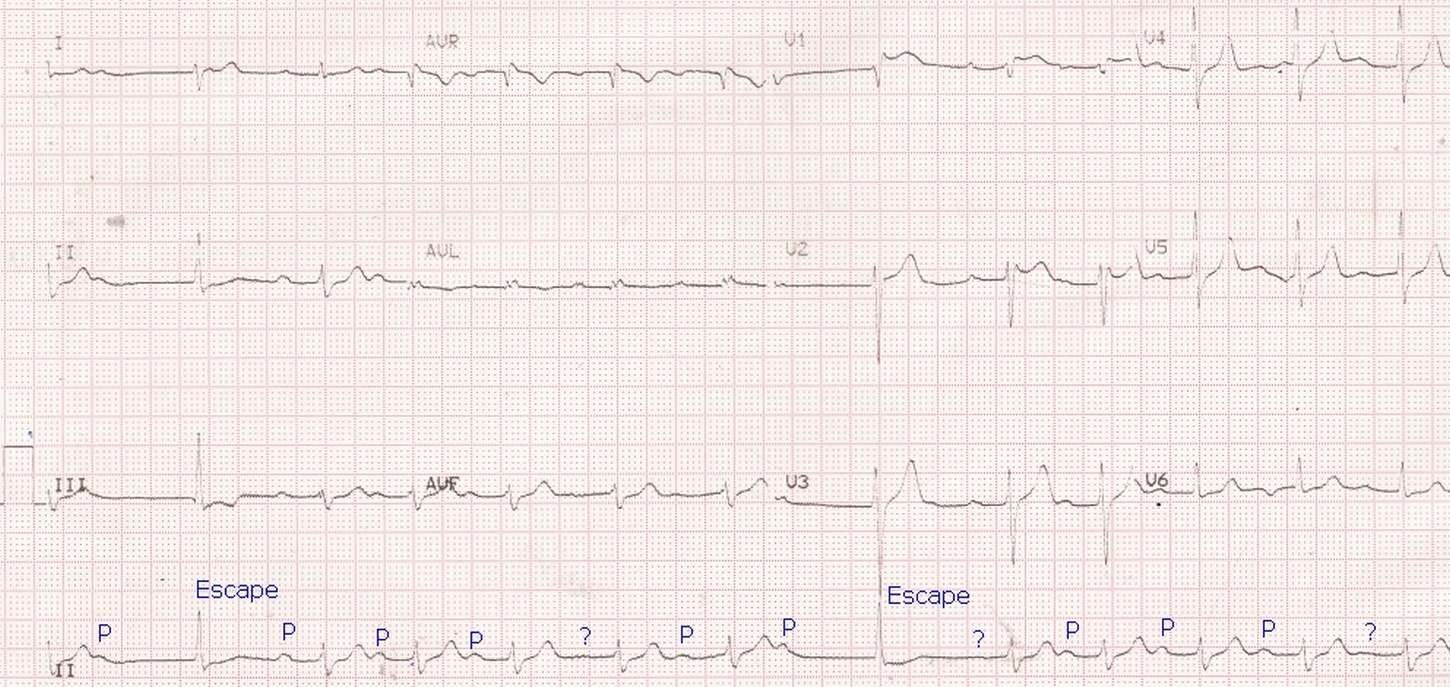AV block with escape beats
AV block with escape beats
Basic PR interval is prolonged to about 320 ms. Some P waves marked as “?” in the lead II rhythm strip are fairly well seen in the other simultaneously recorded leads, with morphology similar to the regular P waves. Some P waves appear to be non conducted, producing a pause which is terminated by a different type QRS complex. These QRS complexes have been marked as escape beats, possibly junctional beats with aberrant conduction as they are not wide enough to be called ventricular escape beats.
The escape beats occur at almost the expected time of the next P wave. It may be that the P waves are masked by the simultaneously occurring QRS complexes. The escape beats do not reset the basic sinus cycle, which continues as before. Aberrancy in junctional escape beats most commonly occur as right bundle branch block pattern [1]. There may associated left or right posterior hemiblock pattern sometimes. Otherwise the QRS complex in general resembles a QRS in sinus beat.
Though the P wave after the second escape beat is not visible in lead II rhythm strip, it is well seen other simultaneously recorded leads. Change in P wave morphology in lead II may also suggest a shifting in the pacemaker focus in some beats, which can only be identified by multi electrode intracardiac recording. This is because the P wave amplitudes in surface leads are small so that minor changes in morphology between beats may not be easily appreciated.
Have a look at an ECG showing complete heart block here.
Reference
- Massumi RA, Ertem GE, Vera Z. Aberrancy of junctional escape beats. Evidence for origin in the fascicles of the left bundle branch. Am J Cardiol. 1972 Mar;29(3):351-9.